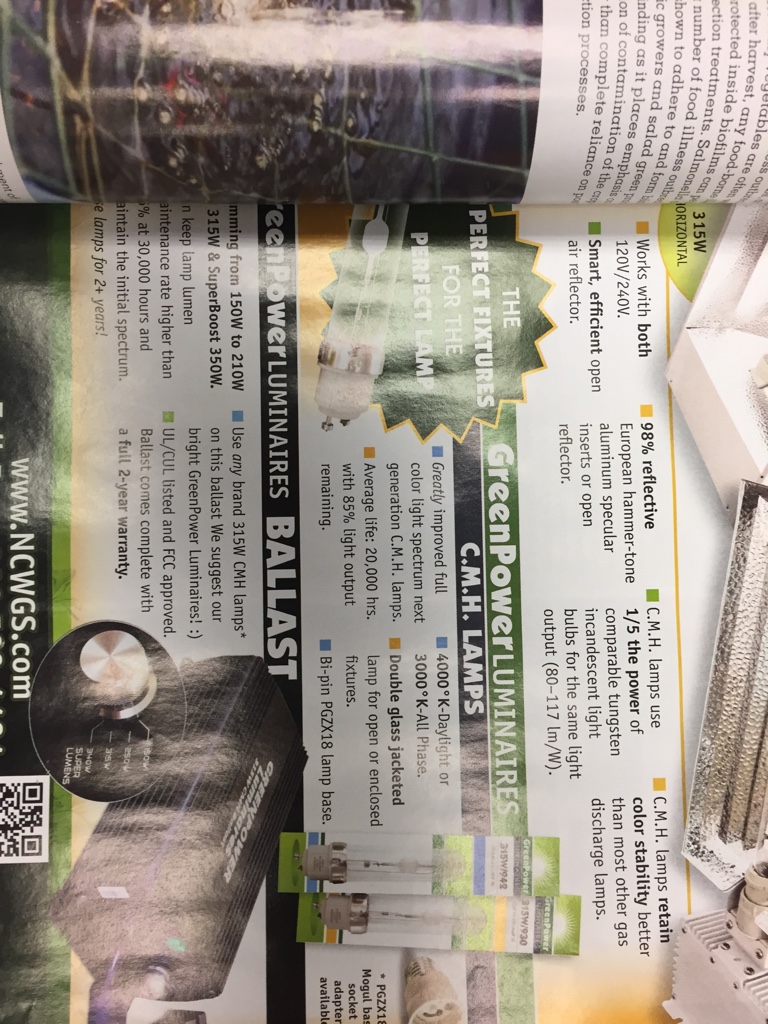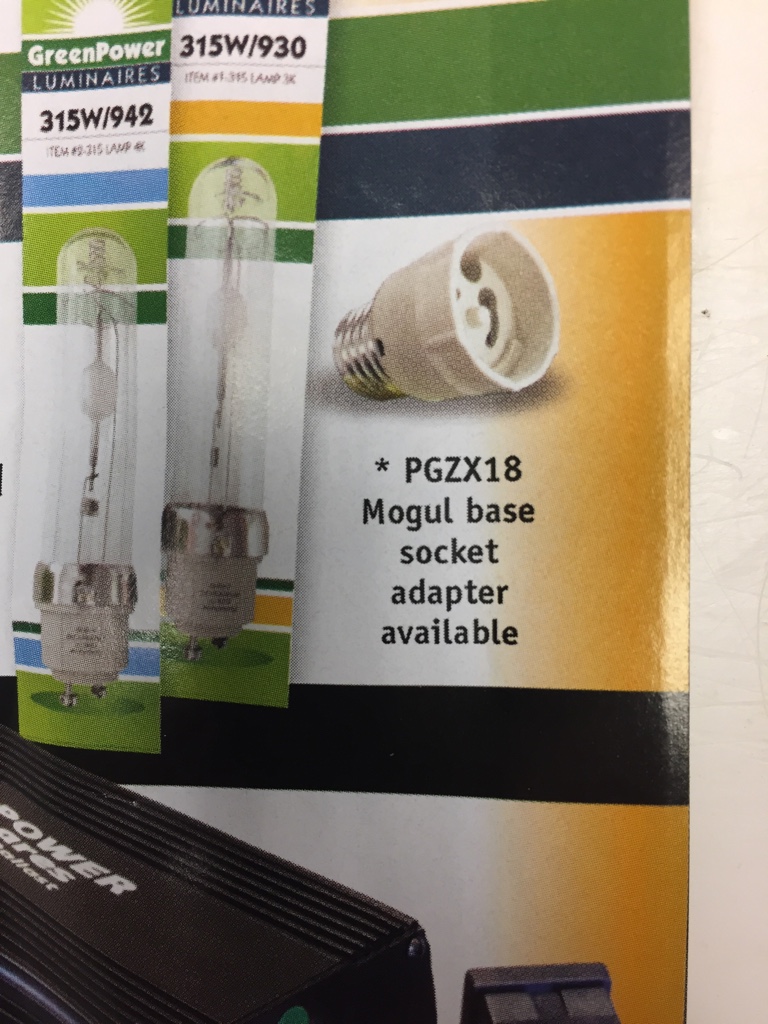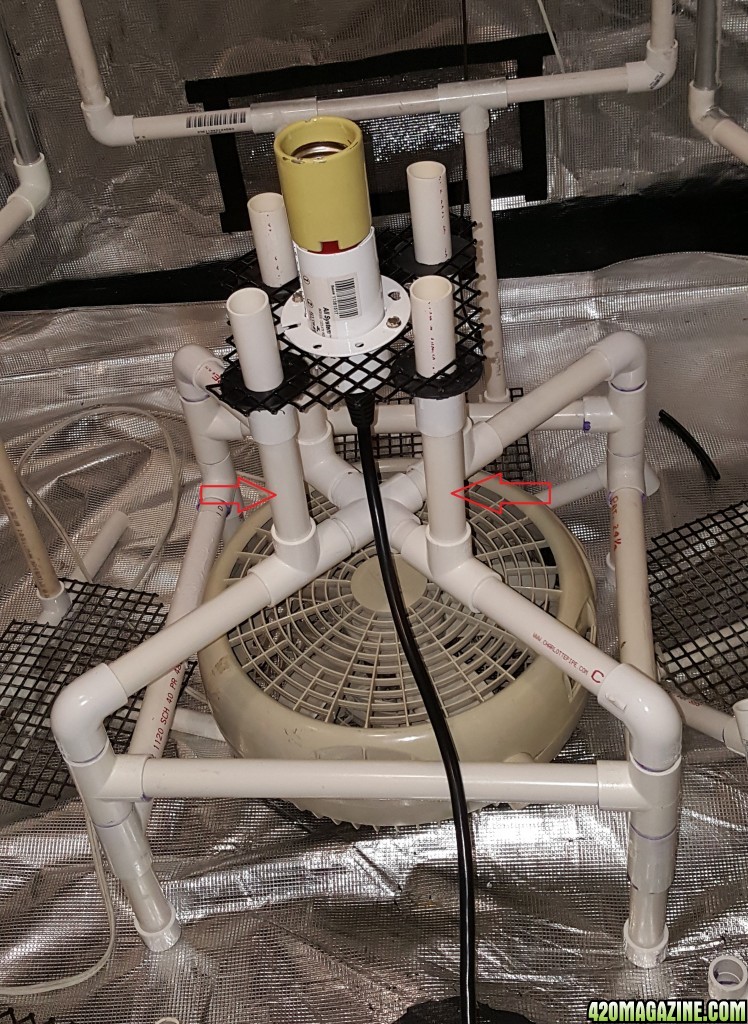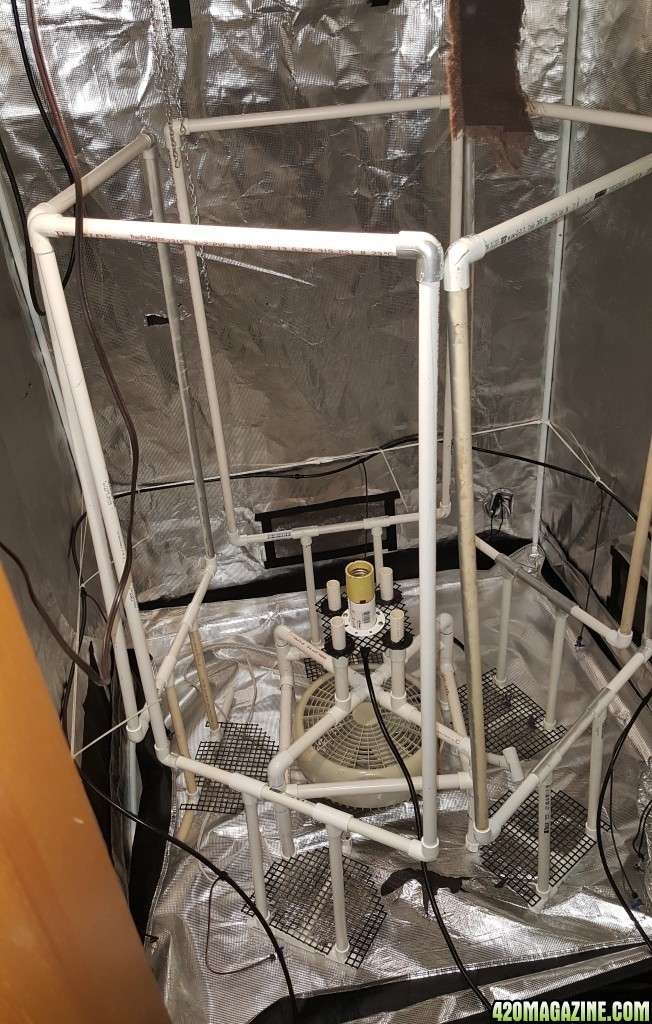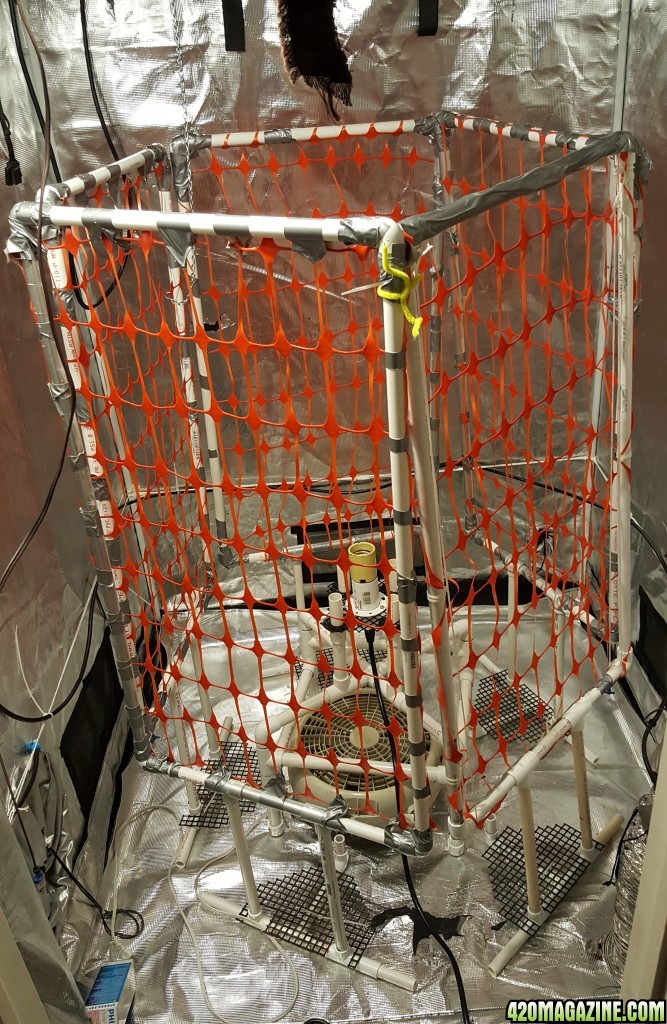Dr Fish
Well-Known Member
Can't find any mention of Sun Systems new 315 watt LEC [cmh] on this site.... The reviews all seem to give it a thumbs up.... Was almost sold on at least a 270 watt, 3watt led x150 for my next light, but this 315watt may be a better buy. if the yield claims are right....
Did run across this bit of cut/paste propaganda...[" When I first started looking into Sun System's LEC 315 light emitting ceramic fixtures I was admittedly skeptical. As I started to do more research I changed my tune. The LEC 315 is a relatively new iteration of a classic Metal Halide. The superiority lies in the ceramic tube which allows the bulb to burn at a higher temperature, creating light that is much closer to light from the sun. This is important to keep in mind when evaluating the spectrum and light quality.
.
Other forms of lighting technology (HPS, Metal Halide) are bright in terms of lumen output. However lumens are meant for measuring brightness in terms of human perception. Plants perceive light brightness in a different way- in the amount of energy the light is valued at based on wavelength. Spectrum plays a key role in this because at different wavelengths, light carries vastly different amounts of energy. The more blue, violet and ultra-violet light becomes, the shorter its wavelength is and the more energy it carries. Orange, red and far red have longer wavelengths and carry less energy. But energy isn't everything, plants evolved to use the entire range of sunlight, both long and short wavelengths. Changing seasons bring with them different light spectrums. That's why we use blue light in veg, it mimics spring and summer. And we use red light in flower, it mimics late summer, fall.
Currently the LEC 315 is available in two different spectrums, and delivers superior light quality. There is a full spectrum 3100K bulb that is best utilized during the flowering growth phase of a plants life. Philips also makes a 4200K bulb, which they call blue, this bulb performs better in the vegetative growth phase. Correlated color temperature is the measure of a light source color appearance, measured in Kelvin. Red and far red have lower Kelvin measurements, HPS lamps are about 2000 Kelvin and appear orange-red best for flowering. Metal Halides range from Daylight blue 6000 Kelvin to Violet, Ultra-Violet 10,000 Kelvin best for use during vegetation.
Another advantage of the LEC 315 grow light system is the Philips square wave ballast, which ensures a more stable beam of light hitting the plants. All ballasts create an electromagnetic frequency and operate at different Hz. The form that this electromagnetic frequency takes is most commonly a Sine wave with peaks on the top and bottom. The number of peaks is measured in Hz. Ballasts operate anywhere from 60Hz, to 100,000Hz. If you look at the shape of a Sine wave most of the time is spent traveling to and from peaks, with very little time spent at the peak, which is wear the energy is being output. A square wave travels to and from peaks instantly with no time spent between so the amount of energy a bulb receives is not fluctuating. It looks like this: _-_-_-_-_-
Arguably the most important attribute of any bulb is its yield per watt. Yield per watt is a measurement of efficiency. Traditional 1000 watt HPS bulbs are generally considered extremely efficient if you're getting anywhere near 1 gram of produce yield per watt of light used — or 1000 grams from a 1000 watts — this is just over 2lbs per light. With the LEC 315 I've seen some people be able to pull down 450-500 grams per 315 watts. That's 1.4-1.5 per watt! If you had 3 LEC's putting off almost 1000 watts you may be close to 1400 grams per 1000 watts. The yield per watt alone makes this system extremely efficient and cost effective.
Another perk of this light is the low heat factor, which enables it to perform well in small spaces like tents, closets, and spare rooms. It is important to keep your grow room at an ideal temperature, typically 70-80˚F. To keep your growing environment at this ideal temperature and obtain desired yields, air cooling is often required. This is where the heat factor becomes not only a plant happiness factor, but a cost factor as well. A light's heat output is what you will want to consider when taking into account the size of the air conditioner you will need. There's a couple ways to look at it. One 1000w HPS creates 4000 BTU's of heat which needs to be cooled — about 4 BTU's per watt. If you can get essentially the same yield with only two LEC's pulling 630 watts that's only 2500 BTU's of heat to account for. This added bonus, of having to manage less heat, especially during the hot months of the summer further increases the efficiency and cost effectiveness of these lights.
The bottom line in most indoor growing scenarios is yield per watt. The LEC 315 or 630's superiority here, coupled with their light quality and low heat factor make them perfectly suited for both small tent grows, and huge commercial production applications. Again it all comes back to yield per watt; give the LEC 315 or 630 a try to see for yourself."]
Comments???
Did run across this bit of cut/paste propaganda...[" When I first started looking into Sun System's LEC 315 light emitting ceramic fixtures I was admittedly skeptical. As I started to do more research I changed my tune. The LEC 315 is a relatively new iteration of a classic Metal Halide. The superiority lies in the ceramic tube which allows the bulb to burn at a higher temperature, creating light that is much closer to light from the sun. This is important to keep in mind when evaluating the spectrum and light quality.
.
Other forms of lighting technology (HPS, Metal Halide) are bright in terms of lumen output. However lumens are meant for measuring brightness in terms of human perception. Plants perceive light brightness in a different way- in the amount of energy the light is valued at based on wavelength. Spectrum plays a key role in this because at different wavelengths, light carries vastly different amounts of energy. The more blue, violet and ultra-violet light becomes, the shorter its wavelength is and the more energy it carries. Orange, red and far red have longer wavelengths and carry less energy. But energy isn't everything, plants evolved to use the entire range of sunlight, both long and short wavelengths. Changing seasons bring with them different light spectrums. That's why we use blue light in veg, it mimics spring and summer. And we use red light in flower, it mimics late summer, fall.
Currently the LEC 315 is available in two different spectrums, and delivers superior light quality. There is a full spectrum 3100K bulb that is best utilized during the flowering growth phase of a plants life. Philips also makes a 4200K bulb, which they call blue, this bulb performs better in the vegetative growth phase. Correlated color temperature is the measure of a light source color appearance, measured in Kelvin. Red and far red have lower Kelvin measurements, HPS lamps are about 2000 Kelvin and appear orange-red best for flowering. Metal Halides range from Daylight blue 6000 Kelvin to Violet, Ultra-Violet 10,000 Kelvin best for use during vegetation.
Another advantage of the LEC 315 grow light system is the Philips square wave ballast, which ensures a more stable beam of light hitting the plants. All ballasts create an electromagnetic frequency and operate at different Hz. The form that this electromagnetic frequency takes is most commonly a Sine wave with peaks on the top and bottom. The number of peaks is measured in Hz. Ballasts operate anywhere from 60Hz, to 100,000Hz. If you look at the shape of a Sine wave most of the time is spent traveling to and from peaks, with very little time spent at the peak, which is wear the energy is being output. A square wave travels to and from peaks instantly with no time spent between so the amount of energy a bulb receives is not fluctuating. It looks like this: _-_-_-_-_-
Arguably the most important attribute of any bulb is its yield per watt. Yield per watt is a measurement of efficiency. Traditional 1000 watt HPS bulbs are generally considered extremely efficient if you're getting anywhere near 1 gram of produce yield per watt of light used — or 1000 grams from a 1000 watts — this is just over 2lbs per light. With the LEC 315 I've seen some people be able to pull down 450-500 grams per 315 watts. That's 1.4-1.5 per watt! If you had 3 LEC's putting off almost 1000 watts you may be close to 1400 grams per 1000 watts. The yield per watt alone makes this system extremely efficient and cost effective.
Another perk of this light is the low heat factor, which enables it to perform well in small spaces like tents, closets, and spare rooms. It is important to keep your grow room at an ideal temperature, typically 70-80˚F. To keep your growing environment at this ideal temperature and obtain desired yields, air cooling is often required. This is where the heat factor becomes not only a plant happiness factor, but a cost factor as well. A light's heat output is what you will want to consider when taking into account the size of the air conditioner you will need. There's a couple ways to look at it. One 1000w HPS creates 4000 BTU's of heat which needs to be cooled — about 4 BTU's per watt. If you can get essentially the same yield with only two LEC's pulling 630 watts that's only 2500 BTU's of heat to account for. This added bonus, of having to manage less heat, especially during the hot months of the summer further increases the efficiency and cost effectiveness of these lights.
The bottom line in most indoor growing scenarios is yield per watt. The LEC 315 or 630's superiority here, coupled with their light quality and low heat factor make them perfectly suited for both small tent grows, and huge commercial production applications. Again it all comes back to yield per watt; give the LEC 315 or 630 a try to see for yourself."]
Comments???



